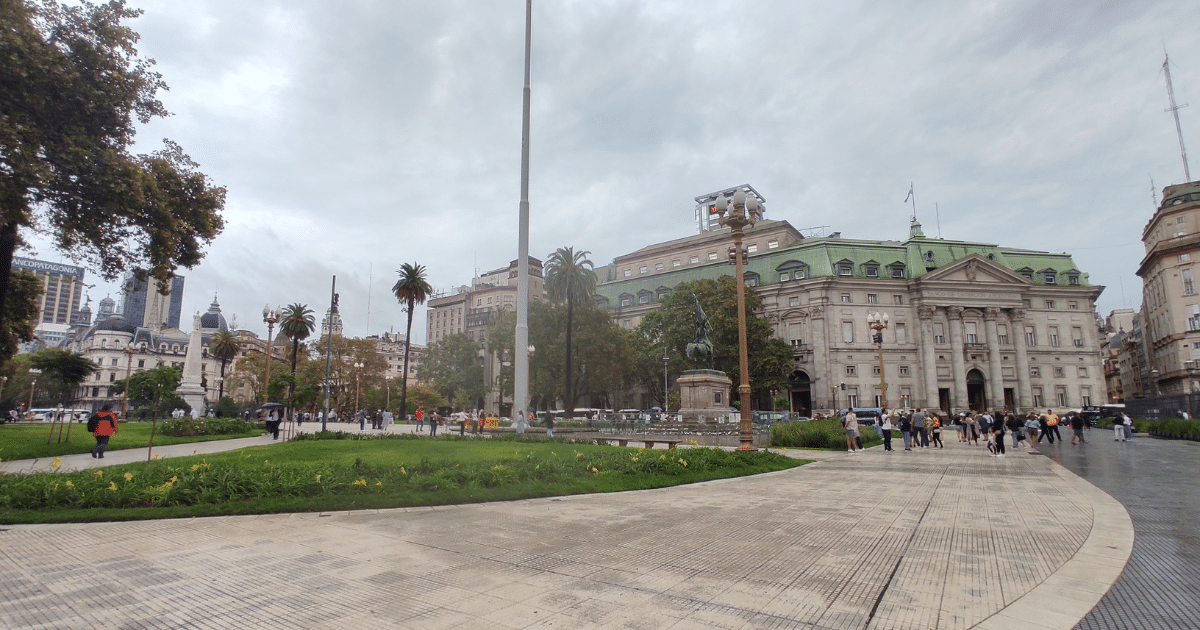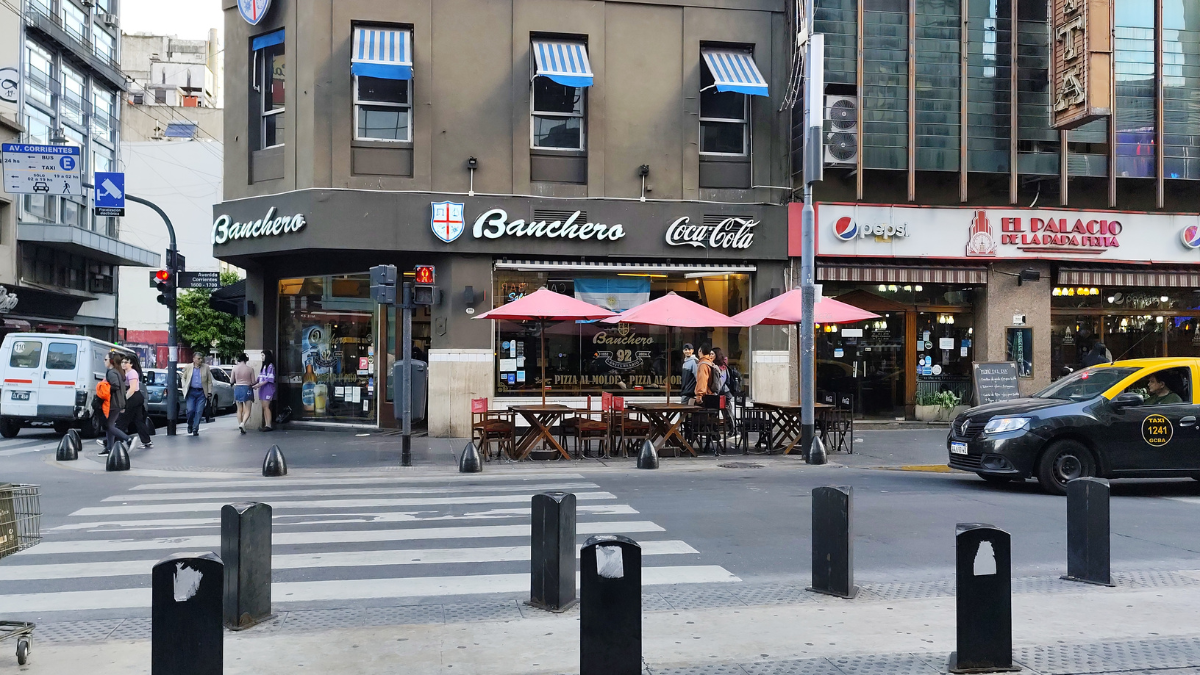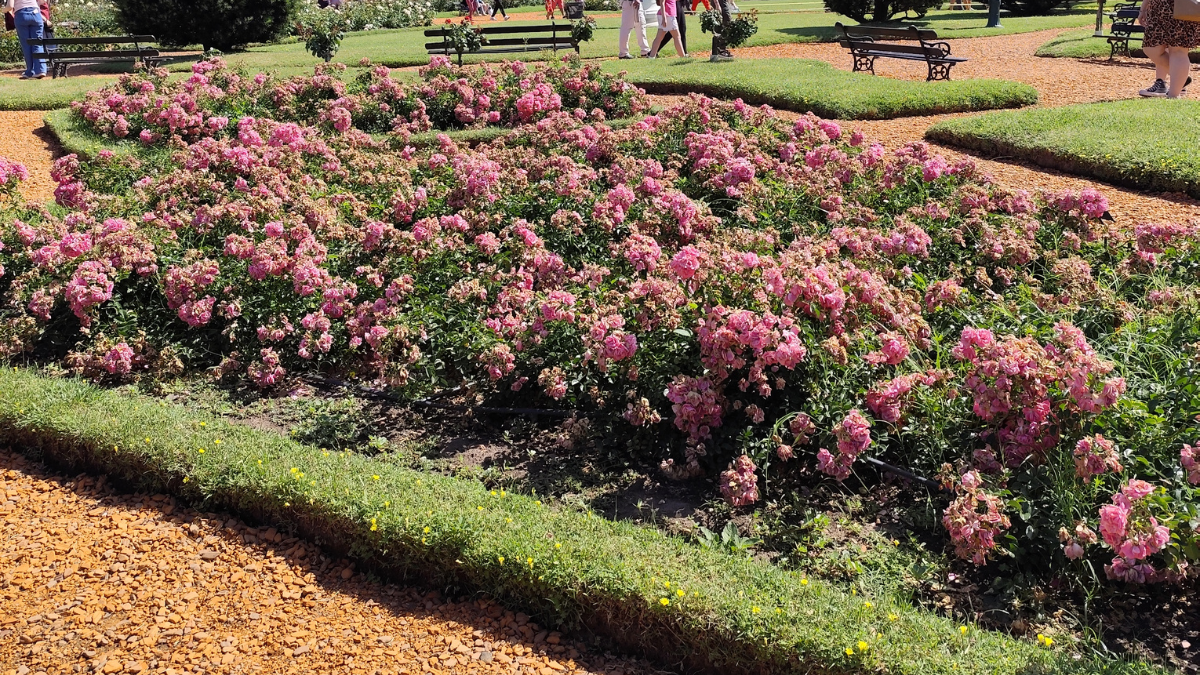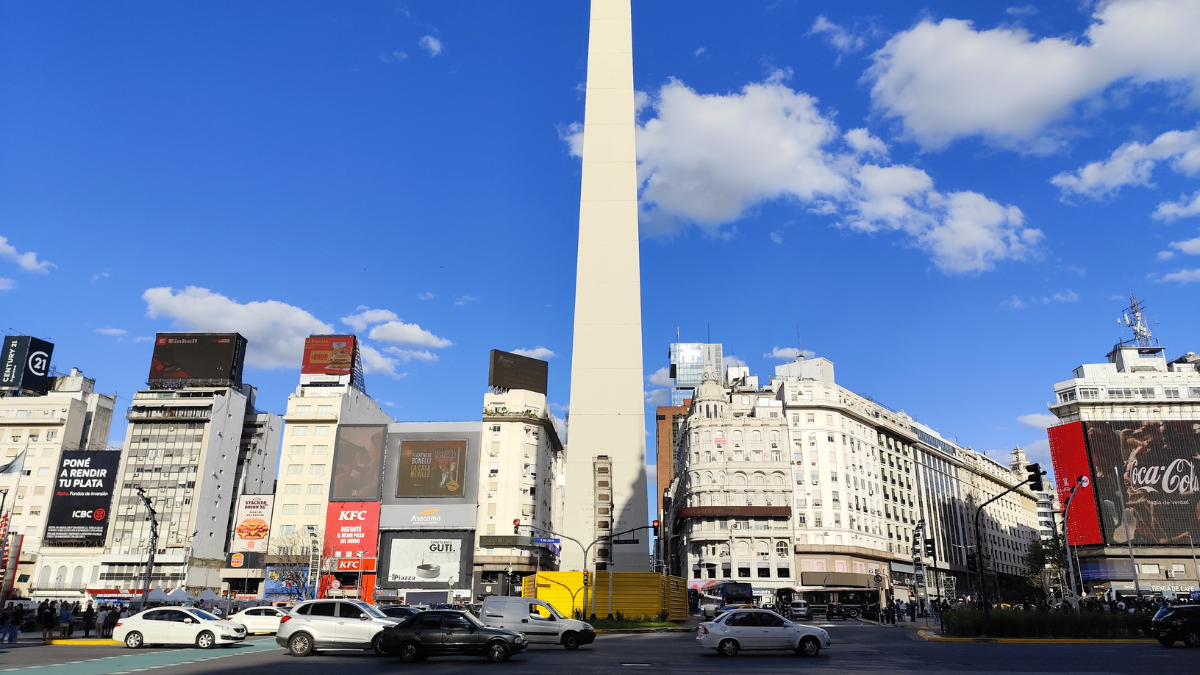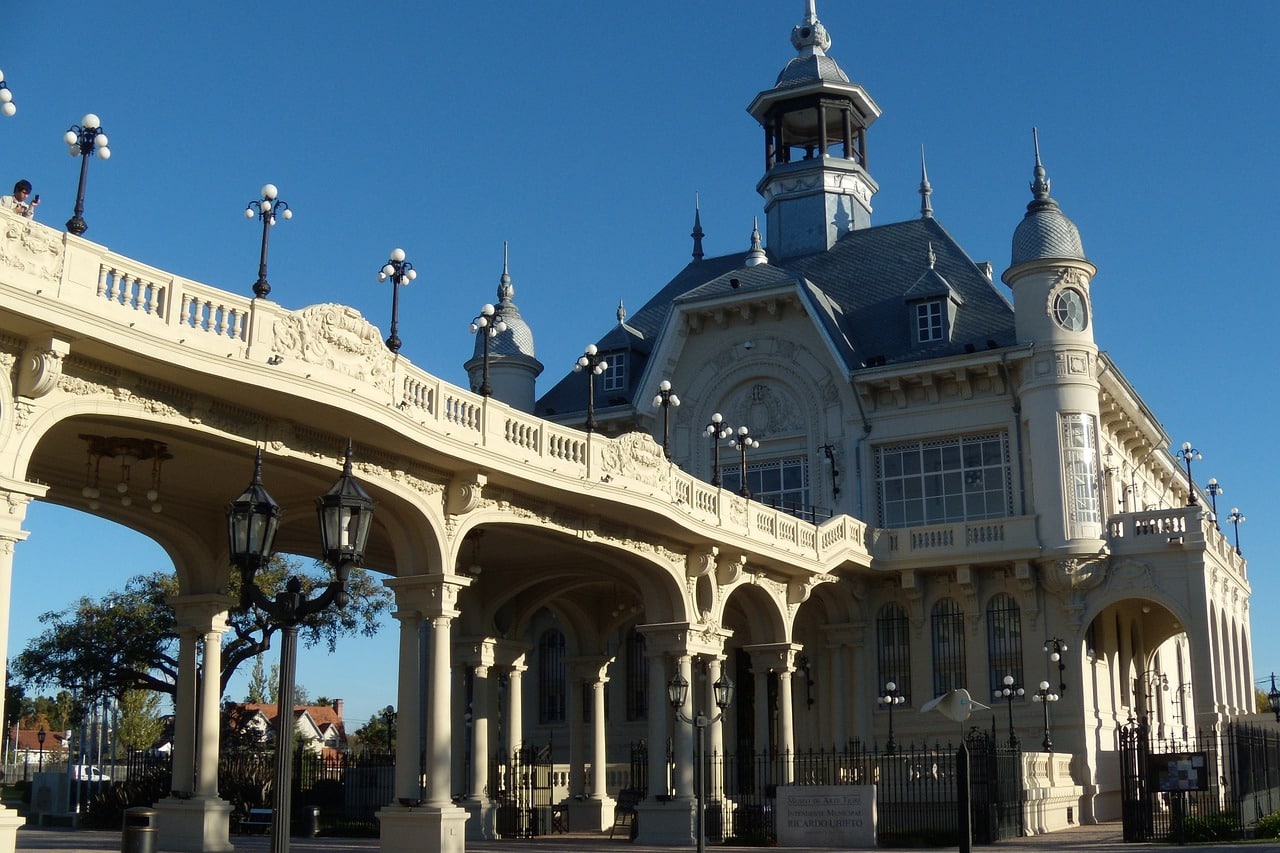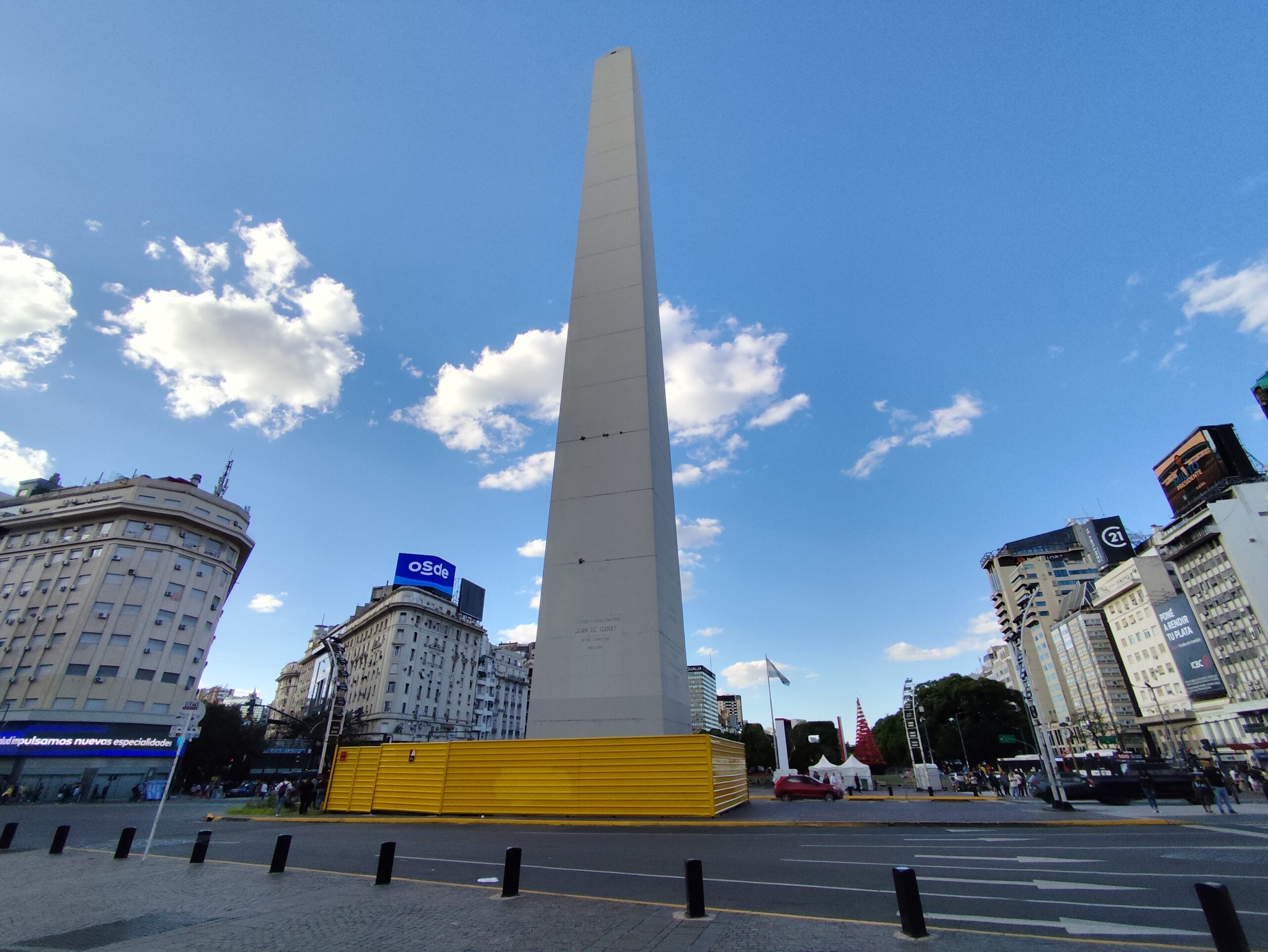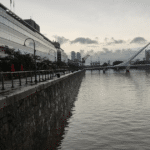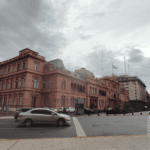The Plaza de Mayo is a true historical and cultural treasure that every traveler must experience. This iconic site has borne witness to some of the most transcendent events in Argentine history, becoming a symbol of the struggle for independence and democracy.
In this comprehensive guide, I will take you on a tour through the Plaza de Mayo, where you will discover its rich history, impressive buildings and monuments, and the best ways to arrive and explore this architectural gem. Additionally, I will provide suggestions for extending your visit to enjoy the surrounding areas, such as the vibrant Puerto Madero, the picturesque San Telmo neighborhood, and the emblematic Manzana de las Luces.
Prepare to immerse yourself in the very essence of Buenos Aires, where every corner of the Plaza de Mayo will transport you through time, revealing the layers of history and culture that have shaped this vibrant city.
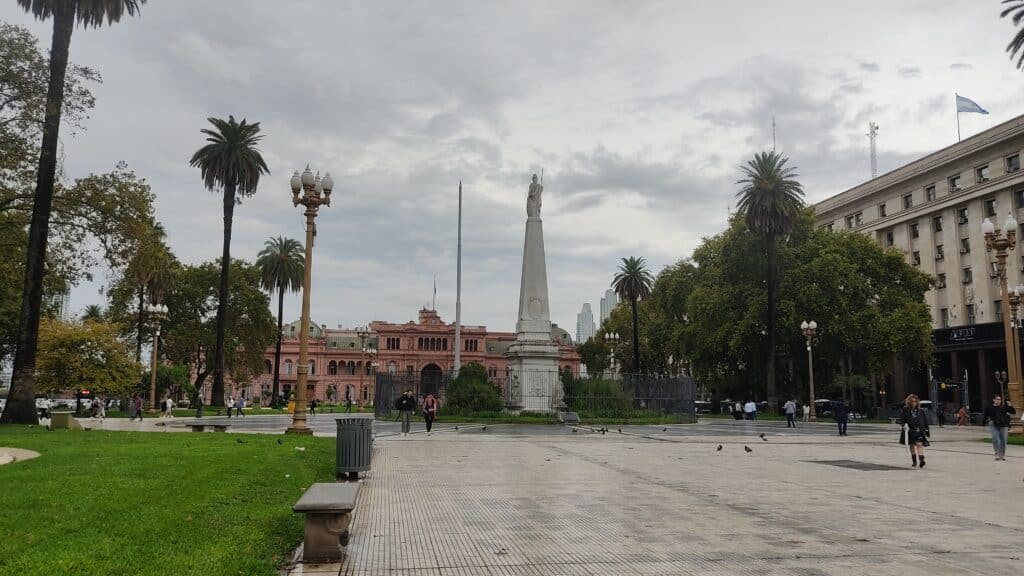
Table of Contents
Where is Plaza de Mayo Located?
Plaza de Mayo sits strategically positioned in the heart of Buenos Aires‘ historic center, the capital of Argentina. This emblematic plaza stands as the political, cultural, and social epicenter of the city, surrounded by some of the nation’s most important buildings.
A Journey Through Plaza de Mayo’s History
Plaza de Mayo has witnessed numerous transcendent events throughout Argentine history, becoming a true symbol of the struggle for independence and democracy.
Foundation and Early Years
Plaza de Mayo was founded in 1580 by Juan de Garay, who laid out the streets and blocks that would form the core of the city of Buenos Aires. In its beginnings, the plaza was known as the ‘Main Square’ and served as the center of commercial, social, and administrative activities for the nascent city.
The May Revolution and Its Impact on the Plaza
In 1810, Plaza de Mayo was the stage for the May Revolution, a movement that marked the start of Argentina’s process of independence from Spanish rule. This historic event transformed the plaza into a symbol of the fight for liberty and national sovereignty.
Plaza de Mayo as a Scene of Historic Events
Over the years, Plaza de Mayo has witnessed numerous crucial events in Argentine history. From popular demonstrations and protests to celebrations and civic acts, the plaza has been the perfect setting to express the aspirations and demands of the Argentine people.
The Modern Plaza: A Space for Memory and Activism
Today, Plaza de Mayo remains a vitally important space for collective memory and social activism. Here, demonstrations, protests, and commemorative acts take place, making it an emblematic place for the expression of ideas and the defense of human rights.
How to Get to Plaza de Mayo: Public Transportation Options
One of the great advantages of visiting Plaza de Mayo is its excellent accessibility via various public transportation options in Buenos Aires.
Precise Directions for Arriving by Public Transit:
- Subway (Metro): The subway stations closest to Plaza de Mayo are:
- Line A: Plaza de Mayo station
- Line E: Bolívar station
- Line D: Catedral station
- Line B: Leandro N. Alem station
- Buses: Numerous bus lines have stops near the plaza, such as lines 105, 111, 146, 24, 28, 29, 50, 8 and others.
- Trains: If traveling from other parts of the city, you can take the train and get off at nearby stations:
- Retiro Station (Mitre and San Martín lines)
- Constitución Station (Roca and Belgrano Sur lines)
- Taxis and remises (private transport services): You can also opt to take a taxi or remis and request to be taken directly to Plaza de Mayo.
Be sure to check updated schedules and routes, as they may be subject to change.
Iconic Buildings and Monuments of Plaza de Mayo
Plaza de Mayo is home to some of Buenos Aires’ most emblematic buildings and monuments, silent witnesses to Argentina’s rich history. Visiting this iconic space will immerse you in a world of impressive architecture and profound symbolism.
The Casa Rosada
One of the most recognizable buildings in Plaza de Mayo is the Casa Rosada, the imposing headquarters of the National Executive Branch. With its distinctive pink color and impressive Neoclassical facade, this emblematic palace has been the stage for crucial moments in Argentine history, such as the famous balconies from which historic speeches have been delivered.
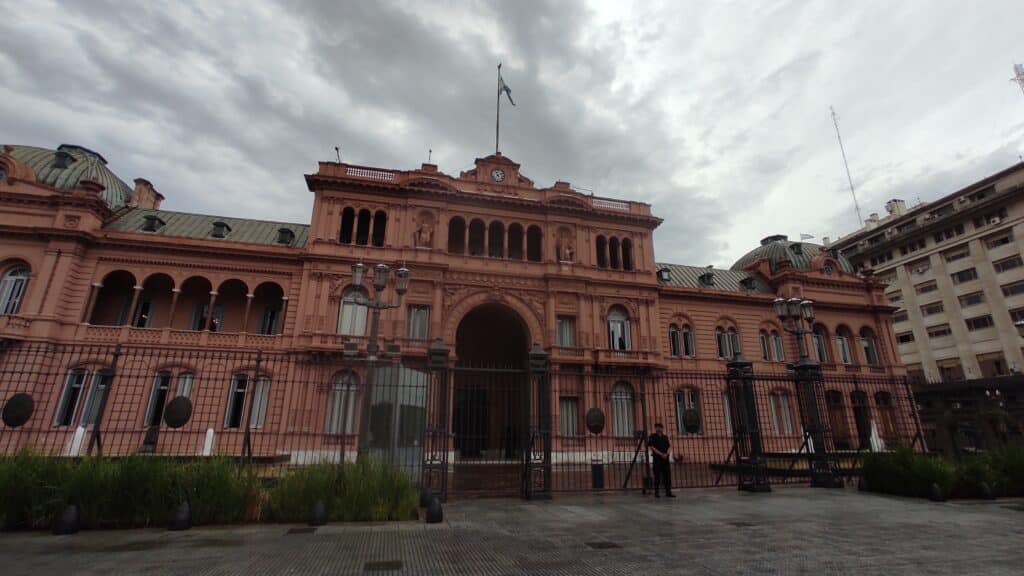
Cabildo of Buenos Aires
Located at one end of the plaza stands the Cabildo of Buenos Aires, a colonial building dating back to the 18th century. This historic edifice was the site where the May Revolution was proclaimed in 1810, initiating Argentina’s process of independence. Today, the Cabildo houses a museum dedicated to preserving and exhibiting the nation’s rich history.
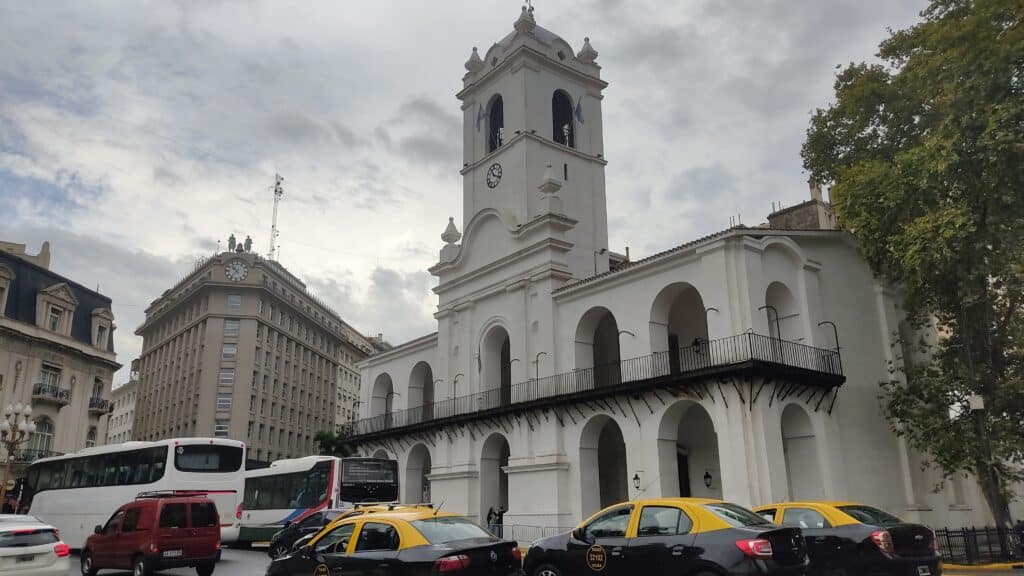
The Metropolitan Cathedral
Imposing and majestic, the Metropolitan Cathedral of Buenos Aires stands proudly in Plaza de Mayo. This impressive cathedral, built in Neoclassical style, is one of Argentina’s most important religious buildings. Beyond its architectural beauty, the cathedral houses priceless works of art and has witnessed transcendent events in the country’s history.
The Monument to the May Revolution
At the very heart of Plaza de Mayo stands the imposing Monument to the May Revolution, a tribute to the heroes and founding fathers who fought for Argentine independence. This monument, erected in 1910 to commemorate the revolution’s centennial, features an impressive equestrian sculpture representing liberty leading the people to victory.
The Piramide de Mayo
Another iconic emblem of the plaza is the “Piramide de Mayo”, a commemorative monument built in 1811 to celebrate the first anniversary of the May Revolution. This elegant Neoclassical pyramid stands as a symbol of Argentine liberty and sovereignty, reminding future generations of the sacrifice of those who fought for independence.
Other Buildings and Monuments of Interest
In addition to those already mentioned, Plaza de Mayo is home to a number of other buildings and monuments worth visiting:
- Banco de la Nación Argentina: This imposing Renaissance Revival-style building is an architectural treasure.
- Manuel Belgrano Monument: An equestrian statue honoring this Argentine founding father and creator of the national flag.
- Bicentennial Museum Access Gate: An impressive portal leading to the Bicentennial Museum, dedicated to the history of Argentine independence.
Every corner of Plaza de Mayo is charged with history and symbolism, making it a true open-air museum that every visitor should explore and appreciate.
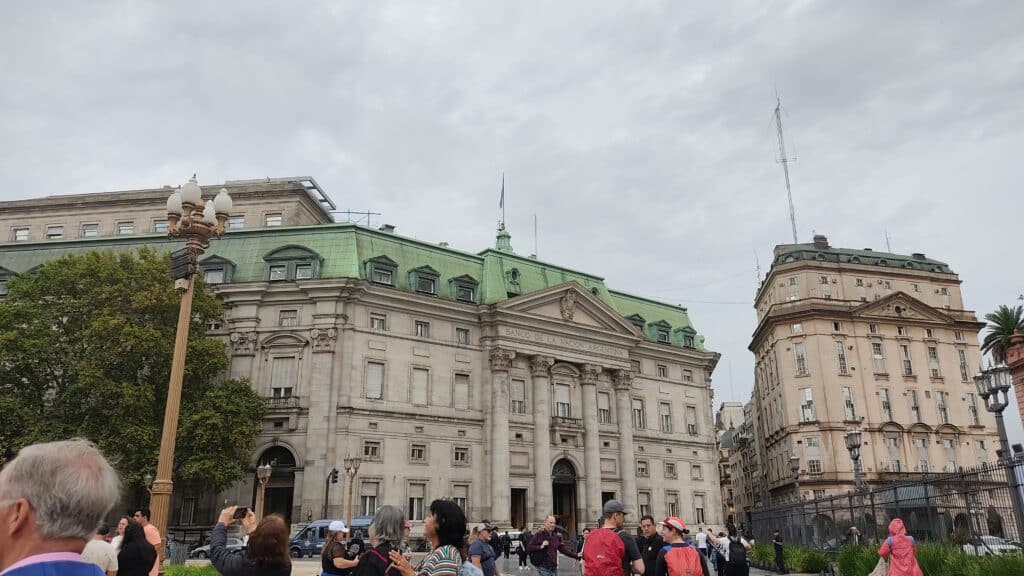
Options to Extend Your Visit and Enjoy the Area
Once you have toured the historic Plaza de Mayo and its emblematic buildings and monuments, we recommend extending your experience by exploring some of the nearby tourist attractions. Get ready to further immerse yourself in the rich culture and architecture of Buenos Aires!
Walks in Puerto Madero, San Telmo and Manzana de las Luces
Just minutes away on foot from Plaza de Mayo, you’ll find Puerto Madero neighborhood, a modern and revitalized area offering beautiful views of the Río de la Plata. Here you can enjoy restaurants, bars, and exclusive shops, as well as admire the impressive contemporary architecture.
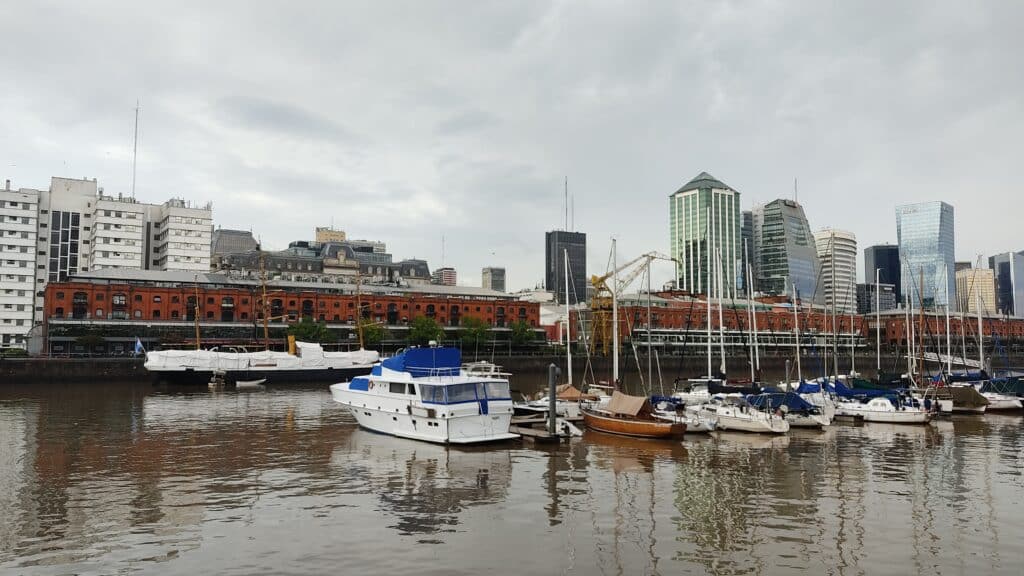
Another unmissable neighborhood is San Telmo, renowned for its cobblestone streets, old colonial houses, and lively antiques fair on Sundays. Walking through this picturesque area is to immerse yourself in true porteño charm and history.
Finally, don’t miss the opportunity to visit Manzana de las Luces, a set of historic buildings that once housed the University of Buenos Aires. This emblematic place is a true architectural and cultural treasure.

